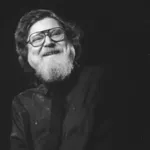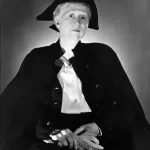When the stranger bumps his shoulder into me, hard, without an ounce of concern, I can feel the fire bubbling inside of me. The heat from the concrete rising up, through my feet, reverberating like electricity about to erupt magma through every orifice of my body. Lava that will oxidize every atom and molecule of his body on contact. The city as embodied trauma. The trauma of settlement. I spin around to yell after him, letting the anger fully consume my spirit as it has so many times before. I don't know where the empowerment ends and the dissolution begins anymore.
A physical encounter with a stranger ignites a fire of emotions about how to express the trauma of settlement and life in a colonial, urban environment.
-
This is a block-shaped or prose poem, with long lines running to the left margin of the page. How does the shape of the poem reflect and reinforce what the poet is saying?
-
What are three ways the poet describes heat? How are heat and emotion related?
-
Describe the narrator of the poem. What descriptive language is used to show who the narrator is, what the narrator does, and how the narrator feels?
-
Can poetry both a contain and release emotions? In this poem, how do emotions connect to expressions of identity? And what does this have to do with “spirit”?
-
Dissolution means to break apart. What is an example of a description in the poem that shows how the narrator might feel like they are breaking apart?
-
What do you think the narrator means when they write: ‘I don't know where the empowerment ends and the dissolution begins anymore.’?
-
niya is Cree and can be translated as “me,” “mine,” or even “I am.” How does the title of the poem connect to the rest of the poem, to the events and actions we see?
-
The shape of the poem is a tight block. Try reading the poem without stopping at each period. Try reading the poem with a 1 second pause after each period. Which reading feels most connected to the essence of the poem? How and why?
- Choose an emotion you have felt strongly. Name it and write three descriptions of how this emotion feels physically, how it feels in your body.
Useful Links
(Sakihitowin/Love and Kindness): Practicing an Indigenous ...
Lindsay Nixon, "niya" from "Toxic Masculinities" in Nîtisânak. Text licensed under Creative Commons NY-NC-ND 4.0 2018 by Lindsay Nixon. Reprinted by permission of the author.
Source: Nîtisânak (Metonymy Press, 2018)





